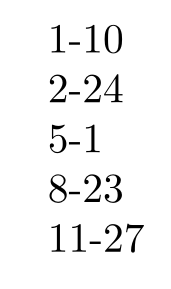Skillmon

# LaTeX, 54 bytes
The function definition:
```tex
\def~#1{\setdatebynumber{#1}\thedatemonth-\thedateday}
```
Complete script:
```tex
\documentclass{article}
\usepackage{datenumber}
\def~#1{\setdatebynumber{#1}\thedatemonth-\thedateday}
\begin{document}
~{10}
~{55}
~{121}
~{235}
~{331}
\end{document}
```
Output (in PDF), format is M-D:

The `datenumber` package uses 1800 as the start year, which was no leap year.
Adám

# [APL (Dyalog Extended)], 9 [bytes](https://codegolf.meta.stackexchange.com/a/9429/43319 "When can APL characters be counted as 1 byte each?") [^SBCS^](https://github.com/abrudz/SBCS ".dyalog files using a single byte character set")
Anonymous tacit prefix function returning `[M,D]`
```apl
2↑1↓⌂date
```
[Try it online!][TIO-k6hkmfg1]
`⌂date` returns a full `[1990,M,D,h,m,a,f]` date-time (1990 was not a leap year)
`1↓` drop the year
`2↑` take the month and day
[APL (Dyalog Extended)]: https://github.com/abrudz/dyalog-apl-extended
[TIO-k6hkmfg1]: https://tio.run/##SyzI0U2pTMzJT9dNrShJzUtJTfn/3@hR20TDR22TH/U0pSSWpP5Pe9Q24VFv36O@qZ7@j7qaD603BioA8oKDnIFkiIdn8P80BUMDrjQFU1MgYWhkCCSNjEFsY2NDAA "APL (Dyalog Extended) – Try It Online"